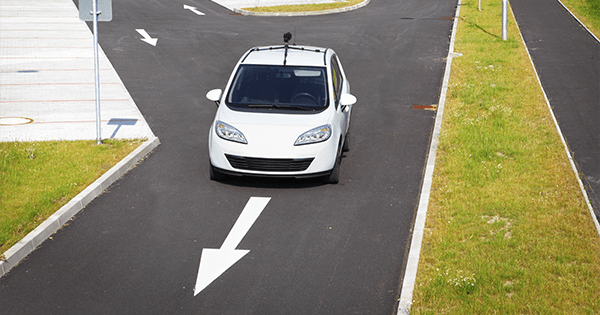Stay connected
Subscribe to our fleet blog and follow us on social media to receive all our fuel and energy industry insights.
"*" indicates required fields

General Motors and Lyft recently announced that they would be working together to develop a network of self-driving cars that riders can call up on demand. This is a vision of the future shared by the likes of Uber Chief Executive Officer Travis Kalanick and Google parent Alphabet.
A self-driving car certainly has its perks – the potential for lower costs and increased safety chief among them – but is autonomous vehicle technology the future of fleets across the country?
At the moment, the answer is no. But, the possibilities do exist, and discussions have started across certain circles of fleet management. At the least, businesses are keeping a close eye on the developing trends in driverless vehicles, waiting for the day when the technology can be incorporated into various fleets.
According to PropertyCasualty360.com, many different manufacturers are working on their own versions of an autonomous vehicle. One of the most prominent so far has been Google’s designs of the Toyota Prius and Lexus models. Mercedes-Benz has also been developing driverless cars, as has Audi, Chevrolet and Cadillac.
Recent testing has been ongoing here in the U.S., as well as in England, Italy and other countries. Driverless vehicles have practical applications for consumers, government agencies, public transportation and other fleets, as long as the technology can perform.
Can autonomous fleets save money?
One of the biggest reasons for a push for self-driving fleet vehicles is the savings. Fleet Owner explained that those in favor of this technological trend argue that fleets will be able to cut back on fuel consumption, limit emissions and improve safety.
“Automated vehicle technologies can enhance fuel efficiency by communicating with disparate vehicle systems and sub-systems in trucks featuring electronic interfaces,” Sandeep Kar, global director of Automotive & Transportation Research for Frost & Sullivan, told Fleet Owner. “Moreover, OEMs will design and use these technologies to catalyze highest fuel efficiency so as to influence the purchase decision of truck buyers.”
A driverless fleet vehicle isn’t the end of the driver position within the company, however. The possibility remains for drivers to trade off duties with the technology, maximizing their time on the road and allowing them to attend to other tasks while still on route to their destination.
“Nowadays, more and more fleets are incentivizing drivers for safe driving, and this technology can help drivers with safe driving, regulation compliance and fatigue reduction,” Kar told the news source.
Even so, it is important to remember that autonomous vehicles aren’t coming anytime soon, even for commercial applications. Insurance and regulations are still lagging, and there is concern about the dangers of driverless cars on the road. But, the motivation is there, and the number of self-driving vehicles will likely increase over the coming few decades.
Subscribe to our fleet blog and follow us on social media to receive all our fuel and energy industry insights.
"*" indicates required fields